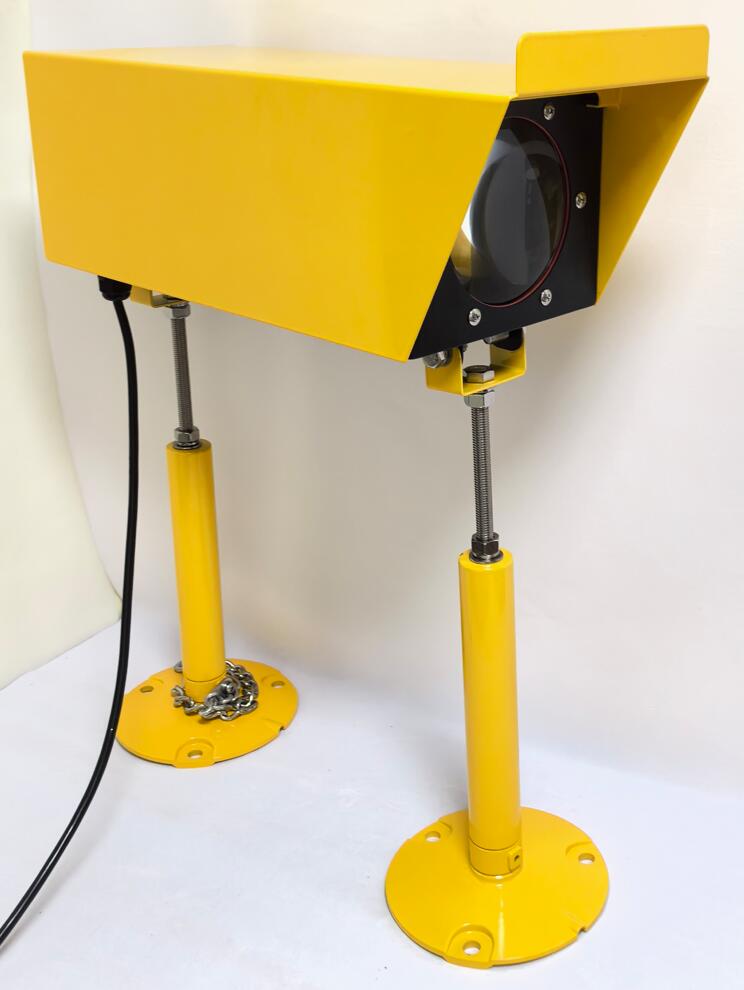The Helicopter Approach Path Indicator (HAPI) is a vital visual aid for pilots, ensuring precision and safety during helicopter landings. Designed to provide accurate guidance for approach angles, the HAPI system is a cornerstone of heliport operations, particularly in complex or challenging environments. This article explores the significance, functionality, and advancements of the Helicopter Approach Path Indicator, highlighting its indispensable role in modern aviation.
What is a Helicopter Approach Path Indicator?
A Helicopter Approach Path Indicator is a ground-based lighting system that visually communicates the correct glide path to helicopter pilots during landing. By emitting distinct light signals, the HAPI allows pilots to determine whether they are on the correct approach slope, too high, or too low.
Key Features of the Helicopter Approach Path Indicator
Visual Guidance
The HAPI system uses a combination of green, amber, and red lights to indicate the helicopter's position relative to the desired approach angle.
Green indicates the correct path, amber signals slightly off-path, and red warns of being too low.
Range and Visibility
HAPI lights are designed to be visible from several miles away, providing pilots with early and continuous feedback during their approach.

The intensity of the lights can be adjusted to suit different visibility conditions, such as fog, rain, or night operations.
Durable Construction
Built to withstand harsh weather and environmental conditions, HAPI systems feature robust enclosures and high-intensity light sources.
| Helicopter approach path indicator |
| Helicopter approach path indicator light |
Easy Integration
The Helicopter Approach Path Indicator can be installed at a variety of heliports, from urban rooftop facilities to offshore platforms, enhancing its versatility.
Why is the Helicopter Approach Path Indicator Important?
Enhanced Safety
By providing pilots with real-time feedback on their approach angle, the HAPI minimizes the risk of hard landings, overshoots, or collisions with obstacles.
Improved Precision
The system ensures that pilots maintain the optimal glide path, reducing the likelihood of errors during the critical landing phase.
Operational Efficiency
The use of HAPI systems streamlines landing procedures, allowing for smoother and more predictable operations, even in challenging conditions.
Applications of the Helicopter Approach Path Indicator
Emergency Medical Services (EMS)
HAPI systems are essential at hospital heliports, where precision and safety are paramount for patient transport.
Offshore Platforms
In the oil and gas industry, HAPI systems guide helicopters safely onto platforms amidst challenging weather and limited visibility.
Urban Heliports
Rooftop and urban heliports benefit from HAPI systems, ensuring safe operations in densely populated areas.
Military Operations
The HAPI is widely used in military aviation, enhancing landing precision during tactical and high-stakes operations.
Advances in Helicopter Approach Path Indicator Technology
LED Technology
Modern HAPI systems incorporate energy-efficient LEDs, offering brighter illumination, reduced power consumption, and longer operational life.
Smart Systems
Advanced HAPI models integrate with digital monitoring systems, allowing for real-time adjustments based on environmental conditions and helicopter type.
Portable Solutions
Lightweight, portable HAPI units have been developed for temporary or remote operations, ensuring flexibility in deployment.
Automation and Remote Control
Some HAPI systems feature automated calibration and remote control capabilities, minimizing the need for manual adjustments and maintenance.
Installation and Maintenance of HAPI Systems
Site Assessment
Proper placement of the HAPI system is critical, ensuring unobstructed visibility for incoming helicopters.
Routine Maintenance
Regular checks of the light intensity, alignment, and structural integrity ensure reliable performance.
Compliance with Standards
HAPI systems must meet international aviation regulations, such as those set by ICAO and FAA, to ensure operational safety and reliability.
The Future of the Helicopter Approach Path Indicator
The evolution of the Helicopter Approach Path Indicator is closely tied to advancements in aviation technology. Emerging trends include:
Integration with Autonomous Systems: HAPI systems are expected to integrate with autonomous navigation systems, supporting the rise of unmanned aerial vehicles (UAVs) and electric vertical takeoff and landing (eVTOL) aircraft.
Sustainable Energy Solutions: Solar-powered HAPI systems will further reduce environmental impact and increase accessibility in remote areas.
Enhanced User Interfaces: Future systems may incorporate augmented reality (AR) displays, providing pilots with even more intuitive guidance.
The Helicopter Approach Path Indicator is a vital tool that enhances safety, precision, and efficiency in helicopter operations. By providing clear and reliable visual guidance, HAPI systems play a critical role in various applications, from emergency services to urban mobility. As technology advances, the continued innovation of HAPI systems will ensure they remain an indispensable component of modern aviation, supporting safer skies and smoother landings for years to come.